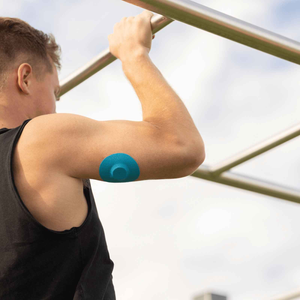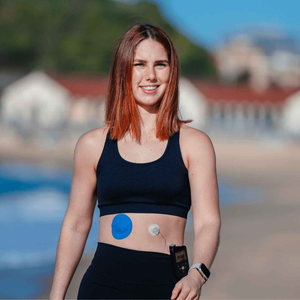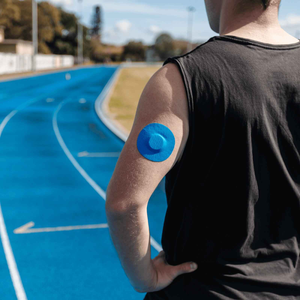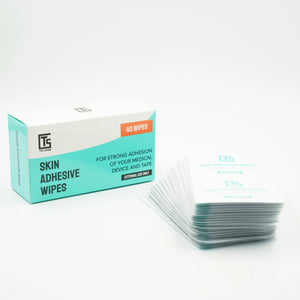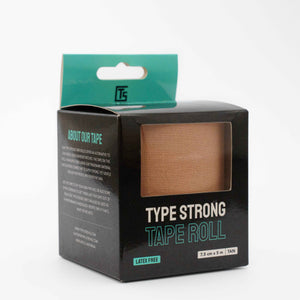Understanding how food affects blood glucose levels is one of the most valuable insights you can gain from wearing a CGM. A continuous glucose monitor doesn’t tell you what to eat - it shows how your body reacts to what you eat.
This guide explores how different foods impact glucose levels, why responses vary, and how your CGM data can help you make informed decisions - without restriction, stress, or guesswork. It also highlights why your sensor patch might respond differently before or after meals, and what you can do to improve patch stability.
Disclaimer: This article is not personalised medical advice. Always consult with your qualified health professional before making changes to your diabetes management or diet.
How the Body Responds to Food
When carbohydrates are consumed, they’re broken down into glucose. This glucose enters the bloodstream and raises blood sugar levels. The body’s response depends on:
- The type and amount of carbohydrate
- Fat, fibre and protein content of the meal
- Order and timing of consumption
- Physical activity and insulin levels
- Hormonal or stress-related factors
Your CGM tracks this response in real time - providing a personalised view of how different foods affect your glucose curve.
Common Glucose Patterns with Food
Here’s how typical food types influence CGM readings:
|
Food or Factor |
Glucose Effect |
Typical CGM Pattern |
|
Refined carbs |
Rapid glucose rise |
Sharp spike within 30–60 minutes |
|
Wholegrains/legumes |
Slower, moderate rise |
Flatter peak, more time in range |
|
High-fat + high-carb meals |
Delayed spike |
Broader curve peaking 2–3 hours later |
|
Meals with protein/fat |
Reduced or delayed peak |
Lower spike, smoother stabilisation |
|
Post-meal movement |
Faster glucose clearance |
Lower peak, quicker return to baseline |
"The glycaemic index (GI) tells us whether a food raises blood glucose levels quickly, moderately or slowly." – NHS UK
Why Glucose Responses Vary
Even with the same meal, two people may show completely different glucose responses. Factors that influence individual variation include:
- Insulin sensitivity
- Gut health and digestion
- Sleep quality and stress levels
- Hormonal timing (e.g. cortisol in the morning)
- Previous meals and physical activity
This is why CGM data is so valuable. It doesn’t generalise — it helps you understand your body’s patterns.
The Role of Food Timing and Order
Many CGM users discover that meal timing and food order matter just as much as the food itself.
For example:
- Eating vegetables or protein before carbohydrates can reduce spikes
- Spreading carbohydrate intake evenly across meals helps avoid large fluctuations
- Walking or using your muscles after meals can flatten glucose curves and improve recovery
- Eating high-fat meals late in the day may cause extended overnight elevation
These observations are easy to track when using a CGM — and help personalise your routine.
How Food-Related Routines Affect Patch Performance
Although food doesn’t directly impact patch adhesion, what happens around meals often does:
- Post-meal walking or workouts may trigger sweat and early lift
- Large meals can cause abdominal expansion, increasing friction or pulling
- Overnight snacks followed by sleep may increase humidity under the patch
If your patch regularly lifts after meals, it could be due to changes in skin temperature, sweat, or digestive movement.
Patch Tip:
Using a reliable CGM patch designed for flexibility and long wear can prevent patch lift during digestion or movement. If your skin is warm or oily after meals, adding adhesive wipes before application may improve grip. For high-movement times, a tape roll can offer extra reinforcement.
People Also Ask
- How does food affect blood glucose levels? Carbohydrates raise glucose levels, but speed and intensity depend on fibre, fat, protein, and portion size.
- How soon after eating does glucose rise on a CGM? Most users see a rise within 10–15 minutes. Peaks often occur 45–60 minutes post-meal, depending on the food.
- Can fat or protein raise glucose levels too? ot directly - but they delay digestion. This can cause a slower rise or extended elevation in some meals.
-
Can I reduce spikes without cutting carbs? Yes. Eating protein first, walking after meals, and combining carbs with fat or fibre can reduce spikes.
Related Guides on Food and Patch Wear
If you’re experiencing patch issues related to food timing or movement, explore these helpful internal guides:
- Improve your skin prep routine before meals or workouts
- Protect your sensor from heat and sweat during post-meal walks
- Address lifting or peeling with solutions for the top CGM patch issues
- Extend wear time with adhesive wipes after activity or heat
Food Is Not the Enemy - It’s the Data That Matters
Your CGM helps you learn how food affects you — not how to restrict it. By observing your glucose data, you can personalise your food choices, timing, and lifestyle without guesswork.
And to get the most out of that data, your patch has to keep up with you. With the right patch and prep, you’ll gain clearer insights, better sensor wear, and more confidence around every meal.
